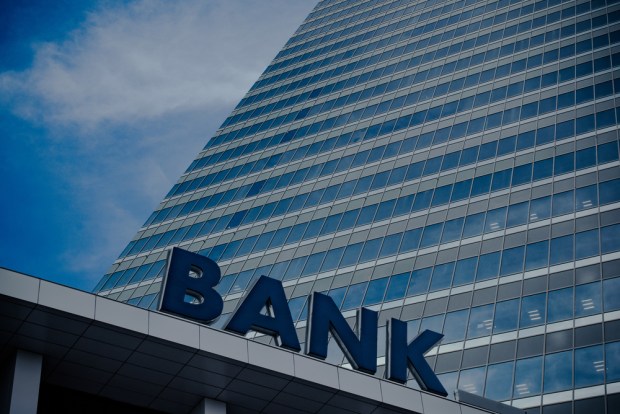
A decade is a favorite demarcation point in taking stock and looking forward, in looking at where something has been, where it is and where it is headed.
Business is no different – specifically in this case, banking.
We’re looking backwards after some banking regulations were eased this past year – surely you know of Dodd-Frank – and from this vantage point, one might wonder how we got here.
The years 2008-2018 have been nothing if not transformative – at least borne out in some numbers. The tipping point, of course, was with Lehman. But like a glacier, Lehman was only the visible part of a system marked by high leverage and the churn that takes place with derivatives trading, asset-backed securities sliced and diced into pools – and, of course, a housing market that required little to no proof that borrowers could actually pay their mortgages. The bailouts that followed are well-known.
Amid a cascade of events, the government stepped in and arranged the Bank of America Merrill Lynch buy. It also brought tens of billions of dollars of fresh capital to the banks, with marquee names such as JPMorgan Chase and Wells Fargo among the recipients.
In fact, here is a starting point for thinking about how banking has changed. Among the most important changes may be the fact that the common equity that is held by banks – a measure of what owners (that would be shareholders), well, own – has improved, and markedly so. For the biggest firms, as noted by The New York Times, that tally has gone from $630 billion a decade ago to $1.1 trillion today. By holding more capital, banks have a buffer against shocks.
And in a report from the Bank for International Settlements’ (BIS) Committee on the Global Financial System, focused on structural changes in banking, the data shows that this ratio has increased from less than 6 percent amid U.S. banks, for example, to roughly 10 percent today.
The capital structure strengthening has come amid regulations that are commonly known as Basel, which stem from a global framework stretching back to 2010, and which outline capital adequacy, liquidity risk and stress testing.
And, of course, here in the States, regulation writ large has helped transform banking. Dodd-Frank was signed into law in 2010 against a backdrop that saw inflation at about 9.9 percent, where foreclosure filings went from a bit more than 717,000 in 2006 to as many as 2.8 million in 2010, before tapering off to about 676,000 last year, as estimated by ATTOM Data Solutions.
Dodd-Frank, of course, sought to keep the banking system under a tighter rein, eyeing the fact that in the immediate term, past regulators and indeed the whole banking system had to grapple with the “too big to fail” problem.
So in the wake of that, the capital requirements got a boost, and Dodd-Frank mandated that banks had to keep a relatively higher proportion of investments in liquid assets – eying, perhaps, the possibility of future bank runs. Thus among the largest players, the mandates have been that they have had to keep as much as 3 percent of shareholders’ equity in cash or liquid securities.
In direct impact to banking, Dodd-Frank also limited “prop” (or proprietary) trading at banks, which was meant to limit risky trading (this is tied to the Volcker Rule).
And, of course, Dodd-Frank also created the Consumer Financial Protection Bureau (CFPB), with the intent to shield consumers from unfair and even harmful financial products and services. The continuing battle over the CFPB – its executive structure and even its very existence – have been well-documented in these virtual pages. Between 2011 and last year, the CFPB has received more than 1.2 million complaints about financial services and products, returning $12 billion in restitution to individuals.
The Evolution, Still Evolving
The shift has been a palpable one, as the BIS has noted that in terms of structural changes, net interest revenue has risen at the expense of securities-derived revenue and “other” revenue line items.
And amid what seems a sanguine economic environment – marked by record corporate profits, an appetite for lending (more on this later) and low unemployment – in May, President Donald Trump signed legislation known as S. 2155, which in fact rolls back some of the provisions in Dodd-Frank. The threshold for what makes a bank “systemically important” (remember that idea of “too big to fail?”) and subject to, say, stricter capital requirements has been changed to $250 billion in assets, up from a prior threshold of $50 billion. And for the smaller banks, the Volcker Rule is one from which they are exempt. Also, smaller banks have seen some easement of requirements tied to what is known as a “qualified mortgage,” which provides lenders with legal protection from homeowners who may later claim they’d been extended mortgages they could not carry.
Beyond other provisions have remained that affect how we have banked and borrowed in the wake of the financial crisis: The Credit CARD Act of 2009, as CNBC noted this week, includes disclosures that have become more detailed, and retroactive interest rate increases have been banned, while fees have been capped.
Low interest rates (a function of monetary policy) have remained in place. That means debt has blossomed. And as the BIS noted, lending growth has been strong, relatively across the board. Overall debt has returned to pre-recession levels, with one caveat: Banks may be eyeing risk a bit differently as 27 percent of corporate debt has been extended to highly leveraged firms, compared to 42 percent in 2007. Household debt is 19 percent higher than the crisis nadir, now at more than $13 trillion.
A decade past the crisis, the appetite for debt has clearly returned – perhaps giving us pause to ponder what we’ve learned.
